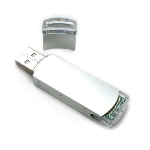
by Mitz Pantic from Tips4pc.com
How to Fix USB Device Not Recognized by Windows
USB stands for Universal Serial Bus, and USB devices are those devices that use USB ports to send and receive data. This line of devices achieved huge popularity in the IT industry after getting their roots in the early part of 1990s. Before that, we had no other option than to settle with troublesome serial and parallel port configurations, in establishing communications with auxiliary devices like keyboard, mouse, external storage drive or a digital camera for example. Stable connection, simple integration and no need for a separate power supply are some of the key factors contributing to this massive acceptability and demands – USB devices are enjoying today.
As nothing is perfect in this world, USB ports and devices can also pose major concerns occasionally when they hide themselves and don’t get detected by the PC. Because of their wide range of applications and frequent use, the degree of frustration is often greater when they don’t show up. But, if you keep your cool, and try to sort out the problem, you can make them work quite easily – most of the time.
Why My Computer Doesn’t Recognize My USB Device?
There could be multiple reasons why your computer cannot detect your USB device. First of all we need to know that there are several USB ports in your PC or laptop and you can generally configure your device connecting to any one of these ports. However, some ports offer high speed data transfer and if you are connecting a device that requires speedy communication – better to tie it up with a high speed port.
From a user’s standpoint, no difference is visible from outside. But, internally that is not the case! USB ports are connected to multiple hubs inside, and some are connected to the root hub and some are connected to the generic hub. Generic hubs are used for high speed USB devices where as root hubs are used for devices like keyboards, mouse etc.
USB functionality of the entire PC is actually controlled by USB host controllers. Host controllers route signals to the root hub, with the root hub being in the 1st level of the hierarchy, and then the root hub distributes signals to the generic hubs underneath them. Therefore, if the root hub is down in signaling terms – all the USB ports will be down. In contrast, if a generic hub is down, that doesn’t necessarily mean all USB ports are down. It could be that the USB ports connected to one particular generic hub is not working because of a broken communication link with the root hub. Therefore you need to figure out how and to which port you should connect your USB device to.
How to Make Your PC Detect USB Device?–Continued Here
This excerpt appears with permission from Tips4PC.com.




